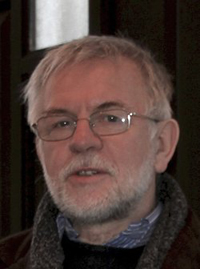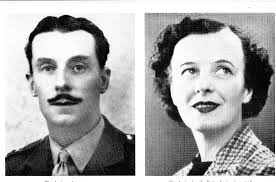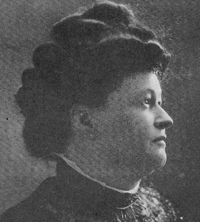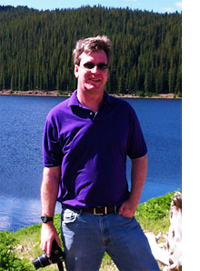|
|
|
 |
Why Seeing The Dead Isn’t Always Believing
Posted on 19 October 2015, 12:05
In his recently released book, Vistas of Infinity, Jurgen Ziewe (below) gives details of his many out-of-body experiences (OBEs) and exploration of other realms of existence. “I, personally, have spent many hundreds of hours in full walking awareness outside of my body on the flip-side of physical life and meticuloulsy recorded what I found in my diaries over a period of more than forty years,” Ziewe offers in the Introduction of the book, subtitled How to Enjoy Life When You Are Dead.

During one of his early OBEs, Ziewe visited his deceased mother. “The only way I recognized my mother was by her aura and the feeling of her,” he writes. “Nothing of her outer appearance was anything that resembled the woman who had reared me and who I had known all my life. It was as if she had undergone a total make-over, including cosmetic surgery, and redesigned every single detail of her appearance. I was struggling to find any characteristic at all which reminded me of her externally.” Accompanying his mother was his aunt, both women old, wrinkled and worn down when they departed this life but both appearing vivaciously young when Ziewe encountered them in another realm of existence.
“I had met my mother not all that long ago and had grown accustomed to the fact that it was only too easy to change your looks in these post-Earth life dimensions and how difficult it must be to maintain the same appearance in a world which was so much determined by thoughts and the feelings of the people who lived there,” he says of a later visit with his mother. Later in the book, he mentions that he did not have one meeting with his mother in which she looked the same as in the previous meeting.
When I further discussed this with Ziewe by email, he added: “I noticed people on the astral level manifest their states of minds and inner feelings in their appearance as well as their new assumed identity.” He referred to a chapter in his book in which he describes meeting a horribly disfigured woman during an OBE. As he was to find out, the woman was a prostitute who had died from a heroin overdoes. She did not realize she had “died” until Ziewe informed her. In effect, the woman’s state of mind had manifested in her appearance.
“On the higher, positive levels, humans have an angelic beauty and are often mistaken for angels, but that doesn’t mean their appearance does not change with their intent or a shift of inner feelings,” Ziewe further explained.
In reading Ziewe’s explanation of this, I thought about the experience of Dr. C. J. Ducasse, a philosophy professor at Brown University for 32 years, as he reported it in his 1961 book, A Critical Examination Of The Belief in a Life After Death. For some two hours, under very good red light, Ducasse observed 18 different materializations, all of them recognized by others in attendance. In some cases, the materialized entities spoke with the sitters and caressed them. Finally a materialized form came to Ducasse and spoke to him, but he did not recognize her. When he asked her to identify herself, she replied that she was his mother. “She did not, however, speak, act, or in the least resemble my mother,” Ducasse wrote. “This was not a disappointment to me since I had gone there for purposes not of consolation but of observation.” The friend who had taken Ducasse to the circle informed him that his mother had materialized on a number of occasions and that the form sometimes looked like her and sometimes it did not.
In his 1952 book, New Light on Survival, Roy Dixon-Smith, a British military officer, told of his deceased wife Betty materializing with two different mediums. Because of the “ectoplasmic wrapping,” he could not confirm that it was Betty (below) on the first such materialization, although the voice, shape, and features all appeared to be hers. With the second medium, Minnie Harrison, he clearly recognized Betty and kissed her before he observed her form sink to the floor at his feet, where it dissolved with the last wisp of it drawn into the materialization cabinet.

Dr. John King, a Toronto physician who founded the Canadian Society for Psychical Research, reported on mind-boggling sittings with Joseph Jonson of Toledo, Ohio, during 1911, in his 1920 book, Dawn of the Awakened Mind. His deceased wife, May, (below) materialized on three different sittings with Jonson, but King noted that she appeared shorter than her normal height in the first sitting. In the second and third sittings she appeared at her normal height, while her form, features, voice, and mannerisms were all that he had become familiar with over his 25-year marriage. She spoke of some very personal matters, things which King said were beyond any research by the medium. Like Dixon-Smith, King observed his wife’s form dissolve and seemingly disappear into the floor in front of him.

In her 1892 book There is No Death, Florence Marryat, a popular writer of that era, tells of a sitting with a materialization medium in which an old family friend, John Powles, communicated but initially declined to materialize. Peter, the medium’s spirit control, explained that “he doesn’t want to show himself because he’s not a bit like what he used to be.” However, when Marryat persuaded him to show himself, she saw only a face that didn’t resemble her old friend in the slightest. She wrote that it was “hard, stiff, and unlifelike.” Powles then told her to sit with the medium again and he would try to do better the next time. At the next sitting, Powles appeared as Marryat remembered him. “The face of John Powles appeared, very different from the time before, as he had his own features and complexion, but his hair and beard (which were auburn during life) appeared phosphoric, as though made of living fire,” Marryat wrote.
After dying in the Titanic disaster of 1912, William T. Stead, a renowned author and social activist, began communicating through several mediums. He explained that there were souls on his side who had the power of sensing people (mediums) who could be used for communication. One such soul helped him find mediums and showed him how to make his presence known. It was explained to him that he had to visualize himself among the people in the flesh and imagine that he was standing there in the flesh with a strong light thrown upon himself. “Hold the visualization very deliberately and in detail, and keep it fixed upon my mind, that at that moment I was there and they were conscious of it,” Stead explained the process.
Stead added that the people at one sitting were able to see only his face because he had seen himself as only a face. “I imagined the part they would recognize me by.” It was in the same way he was able to get a message through. He stood by the medium, concentrated his mind on a short sentence, and repeated it with much emphasis and deliberation until he could hear part of it spoken through the medium.
Communicating through the mediumship of Gladys Osborne Leonard, Claude Kelway-Bamber, a British pilot killed in the Great War, told his mother that he had to concentrate and will his spirit body to stiffen and consolidate before attempting to communicate with her, and it was not until he had absolute mental command over himself in every detail could he even begin. “I had to learn how to locate in my mind the exact place or distance from my mind to where my toes would be,” he explained, “for I must set the mental picture to get exactly five toes on each foot. I must then switch off and yet retain the idea while I think of what the top of my head looks like. I do all this because as soon as I get in touch with these atmospheric forces I have to hold myself together strongly to resist them. Now, if I am not in a hurry to reach my destination, I do not trouble to do anything further than to keep a clear picture of myself in the proportions in which I appear in my own sphere, and I project my thoughts all the time to the place to which I am going, but the first consideration is always my body. If I were in a great hurry, directly I started, I should get the picture of myself very clear, and then I should quickly but gradually contract my body from within; only an advanced spirit can do this, not a newcomer. I begin by drawing my whole consciousness within myself, and in so doing I draw upward and onward each part of my body, making myself very self-centered and brining my extremities nearer to my consciousness. I have told you my body is made of atoms, but because they are minutely fine I can actually consolidate them into very small space; there is so much God-force holding them together. When I get near my destination, I gradually and consciously expand my body to normal dimensions. I only contract my body in this way for emergency traveling, and I know spirits who lave been here many years and who cannot do it; it is only intended for those who have serious and special work to do, in which case it is expedient.”
In effect, we have two different situations here – the OBEs reported by Ziewe in which the spirit’s state of advancement appears to govern the spirit’s appearance, and the mediumship experience in which the materializing spirit has to project a picture of himself as he recalls himself looking when in the flesh into the ectoplasm. The latter apparently isn’t always that easy and takes some practice by the materializing spirit.
The two situations are not in conflict with each other, since the mediumship experience seems to confirm what Ziewe says about appearance – that is, it is not the same as when in the material life. It is a matter of recalling the image and projecting it so that those present at the sitting will recognize the spirit as a former loved one or friend. Dr. Charles Richet, a Nobel Prize winner in medicine, reported speaking with a spirit and asking him to show himself, but the spirit replied that he could not show himself as he could not remember what he looked like when in the flesh.
All that may be too much for the debunker or the person who assumes that celestial conditions must match the terrestrial to accept, but for the more open-minded person it helps turn nonsense into sense.
Michael Tymn is the author of The Afterlife Revealed: What Happens After We Die is published by White Crow Books. His latest book, Resurrecting Leonora Piper: How Science Discovered the Afterlife is now available on Amazon and other online book stores.
His latest book Dead Men Talking: Afterlife Communication from World War I is published by White Crow Books.
Next blog post: November 8
Read comments or post one of your own
|
 |
Psychology, the Near-Death Experience, and The Isolation Crisis
Posted on 05 October 2015, 9:43
As a boy growing up during the 1940s, I knew the names of everyone on my city block – at least eight houses in each direction from the house I lived in and on both sides of the street. As I pedaled my bike up or down the street, the neighbors might be sitting on their porches or working in their gardens and I would greet them by name or they would greet me or wave to me. My mother could often be found on the sidewalk talking with a neighbor from across the street or down the street. With a couple of exceptions, people on the block knew each other and talked with each other.
In my present home, in which I have lived for nine years, I know the immediate neighbors on each side of my house, but that’s it. I don’t even know what the neighbors two houses away from mine look like. I recall a situation a few years ago when I was leaving my home in my car during a heavy rain. A young girl from across the street was battling the wind and rain, her umbrella collapsing in wind as she headed for school two blocks away. Fifty or 60 years ago, I would have felt comfortable in stopping and offering to drive the girl to school, but I dared not stop for her in this day and age as she most certainly had been taught by her parents not to accept rides from strangers, even those who live across the street. It’s a sad state of affairs.
What changed? Television, of course. During the 1950s, when television became popular, people left their front porches and gardens, drew the blinds, and planted themselves in front of the TV set, seemingly never to go outside again unless leaving for work or to go shopping. I thought about this a few days ago while reading Psychology and the Near-Death Experience, authored by Roy L. Hill, Psy.D., (below) and recently released by White Crow Books. Part of the book discusses what Hill calls “The Isolation Crisis.”

According to Hill, a clinical psychologist, isolation has reached epidemic proportions in Western society, primarily the result of television but also due to other electronic communication. “Living in the virtual world keeps people from feeling lonely while avoiding social risks,” he explains. “Thus, the over-use of electronic communication and entertainment may be viewed as a trouble-free defense against isolation. Television has been designed for us to feel as though we are sharing in real friendships and exciting lives. A laugh track, for instance, helps viewers feel like they are sharing humor with an audience.”
Dependence on television, Hill states, is the single most consistent predictor of civil disengagement – not poverty, morality, education, or intelligence. With television, there is little time for anything else, except, of course, the Internet. Hill notes that the typical American spends 2 1/2 hours a day surfing the Internet for personal use.
This escape into electronic communication and entertainment results in a certain spiritual emptiness. “From a spiritual perspective, many people in society are steadily abandoning their mission to love each other by doing for each other,” is the way Hill puts it, after citing various studies indicating a significant decline in clubs and organizations, church attendance, volunteer work, public meetings, and other social and civic activities.
While electronic communication involves more social interaction than television, Hill does not see the mundane communication usually associated with texting as a substitute for face-to-face interaction. “Chatter only creates an illusion of interconnection,” he opines, adding that chronic text users usually feel emptiness as soon as they are done texting. He sees texting as “a Band-Aid solution that temporarily staves off isolation in order to fill an unfillable void.”
Hill asks why so many people adopt movie stars and athletes as their heroes As previously observed in this blog, movie actors are no more than “pretend” people and athletes are “pretend” warriors. Yet, we treat these pretend people as if they are gods of some kind, while giving no special recognition to the people they pretend to be. I still have a vivid recollection of seeing a number of military men lined up to get the autograph of a football player – in effect, the real warriors paying homage to the pretend warrior. “From the existentialist position, people create fictional associations with celebrities as a defense against isolation and meaninglessness,” Hill explains it.
In reading Hill’s book, I was continually surprised by his boldness. Rather than beat around the bush as so many professional men and women do in their efforts to straddle the fence and remain “scientific” when discussing the near-death experience (NDE), Hill keeps nothing secret about his beliefs – more convictions than beliefs – favoring God, an afterlife, and spiritual influences around us, based primarily on the lessons coming from the NDE. He admits early on that scientifically minded readers will likely groan with discomfort at what he writes. “To the science materialist, the near-death experience represents just another repackaged religion, although with a low bent,” he offers. “The central problem is not spiritual superstition, as I see it, but the limited conceptual understanding of the human brain. There appears to be a scientific hubris surrounding the human aptitude for discovery. Not everything in the universe is observable or measurable by present day science.”
Hill examines the existential considerations surrounding the NDE, suggesting that NDE research has provided us with a purpose by informing us that this life is just part of a larger reality and not the meaningless march toward nothingness that materialists succumb to. He examines the empirical support for the NDE, calling upon Dr. Jeffrey Long’s nine lines of evidence, including out-of-body experiences, meeting deceased relatives, life reviews, people blind since birth being able to see, profound life changes and other commonalities reported by NDErs. While recognizing that the debunker will reject all nine lines of evidence, basing their arguments primarily on certain brain chemicals being released, Hill argues that no one has demonstrated a causal link between chemistry and the NDE.
Still, the “old guard” scientific community resists the evidence. “Adherents of the old paradigm cling to their professional work like a mother clings to her child,” is the way Hill sees the resistance, going on to say that “the field of psychology, pushing toward acceptance in the broader scientific community, has likewise remained silent on the concept of the soul.” The field still adheres to the old nature and nurture determinants of human behavior, too often ignoring spirituality.
There was, of course, one major exception, Hill notes, that being the renowned psychiatrist Carl Jung. As Hill interprets Jung, the greater awareness of consciousness creates greater awareness of the soul. “Increased awareness, in turn, connects a person with the Source,” Hill explains. “From the NDE experience, this oneness means integration with God’s divine nature.”
Citing a number of NDE cases and often quoting the experiencers, including Howard Storm, Dr. Eben Alexander, Anita Moorjani, Dr. George Ritchie and others, Hill goes on to make a case for the existence of the soul, the interconnection between Spirit and God, oneness of being, unconditional love, communication with spiritual beings, spirit influence on humans and after-death communication.
As a prison psychologist, Hill is very familiar with the mindset of the psychopath. He explains that while the average person experiences feelings of guilt and ideas for self-correction after doing something wrong, the psychopath revels in every moment. “The psychopath is incapable of correcting thinking or behavior because he or she lacks concern, compassion, or remorse,” he states, adding that therapy and counseling generally have no effect on changing the psychopath. He notes that tattoos of ghoulish creatures are common among psychopaths, an attempt to express symbolically the evil that burns inside.
As I read Hill’s book, I could visualize his materialistic peers, those belonging to the nature or nurture school of psychology, reading his words with raised eyebrows. However, I was able to read the book with a smile and a nod.
Michael Tymn is the author of The Afterlife Revealed: What Happens After We Die is published by White Crow Books. His latest book, Resurrecting Leonora Piper: How Science Discovered the Afterlife is now available on Amazon and other online book stores.
His latest book Dead Men Talking: Afterlife Communication from World War I is published by White Crow Books.
Next blog post: October 19
Read comments or post one of your own
|
|
|
|